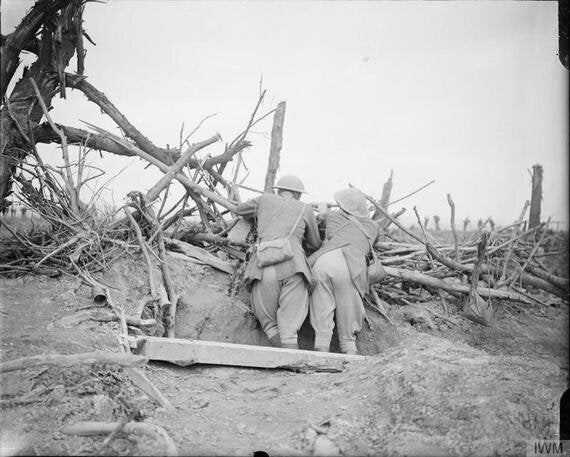It's difficult to recall exactly where I first heard the phrase silent cities as a way of describing the cemeteries and battlefields of the First World War. Maybe it was said by a guide during one of my first trips to the Somme or perhaps I came across it in an old textbook. I do remember finding it terribly poetic and it's stuck with me ever since, although, for me, the concept of it rings far less true than it once did. The battlefields are places of quietness, beauty, and reflection, but they're anything other than silent.
Across the historic landscape of France and Belgium, every grave marker and every name is a piece of history, a life unlived. When you stand beside the carved name of Charles Sorley, the Scottish poet, at Loos and read 'When You See Millions of the Mouthless Dead', he becomes more than stone lettering; when you stand beside the grave of William Noel Hodgson at Mametz and read 'Before Action', written days before he was killed, he becomes more than a singular tombstone.
Of course, they may be the foundation for my own personal interest in the combat, but the stories are rich and endless, and extend far, far beyond the soldier-poets. Visit Walter Tull, a professional footballer and the first black officer to lead British soldiers in battle, whose name is on the Arras Memorial. Visit James McCudden, one of the most highly decorated airmen in British military history, buried at Wavans. Visit Harry MacDonald and Frederick Barratt, buried at Louvencourt, both of whom were shot at dawn in 1916 and 1917 respectively.
It can sometimes be difficult to disconnect the men from the war that slew them, but it's so important to remember that before they were soldiers, they were people. Each time I travel to the battlefields--which can never be often enough--I like to return back home with at least one new name and one new story to weave into the vast, incomprehensible tapestry. There is so much to see, so much to learn, and an infinite collection of human experiences.

Royal Artillery Officers at the Artillery observation post at High Wood. October 1916. (Source: Imperial War Museum)
The landscape itself is by no means stagnant, either, although nature has reclaimed much of her shape over the course of a century. I've lost count of the number of times that I've dodged unexploded grenades walking across the fields of Serre or spotted tangles of rusting barbed wire in the soil. Exploring the battlegrounds is a multi-sensory experience and the pulse of war is always tangible, just below the surface.
Human remains, too, are still being uncovered to this day, often discovered by farmers ploughing their land. Only a few weeks ago, Lance Corporal John Morrison was reburied with full honours at Cuinchy, after he was discovered near Arras in 2014, and since 2008, Oxford Archaeology has recovered over 250 Australian and British soldiers from mass graves at Fromelles. More than half of the bodies have now been identified and each individual is commemorated in their own tomb.
Not all known burial sites are as organised or as contained as the beautiful cemeteries of the Commonwealth War Graves Commission. High Wood lies in the Somme region of northern France and was captured by the British in September 1916, after a bloody two months of battle. After the war, it remained mostly untouched and an estimate of around 8,000 soldiers, both British and German, still rest there. The wood has grown back now, lush and dense, but it remains littered with reminders of the conflict, both above and below the ground. As peaceful as they are, these momentous locations--and the men they hold--speak volumes to us; they'll only ever be silent if we choose not to listen.